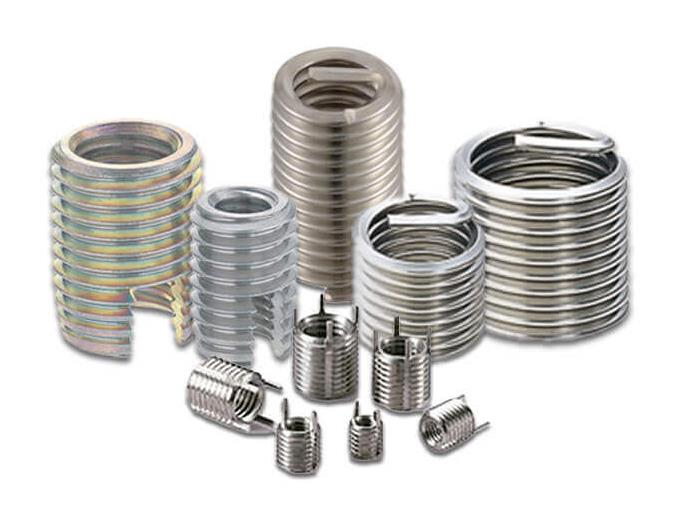Thread inserts are metal components used to reinforce or repair threads in materials such as metal,
plastic, providing a strong and durable threaded hole for securely fastening screws or bolts.
Threaded inserts are widely used components that enhance the functionality and effectiveness of mechanical products. These inserts provide a reliable and efficient fastening solution for a range of applications in different industries. If you're a mechanical engineer, a buyer, or a designer looking to enhance your knowledge of threaded inserts, this comprehensive guide is for you. In this blog post, we will provide a detailed overview of threaded inserts, the types, material properties, processing methods, and industry and parts applications. By the end of this guide, you'll be well-equipped to make an informed decision on threaded inserts that best meet your needs.
Types of Threaded Inserts:
There are generally two types of threaded inserts: blind and through. Blind threaded inserts, as the name implies, are inserted from one side and can't be seen from the other. Through threaded inserts pass all the way through the material they are inserted into. Within these two categories, there are several types of threaded inserts. Helical inserts are used when added strength is needed, particularly in weaker materials like aluminum. Coiled spring threaded inserts, on the other hand, are capable of providing quick and efficient fastening in thin sheet metals. Tapered threaded inserts are used for devices that require frequent assembly and disassembly and prevents wear to the equipment.
Material Properties of Threaded Inserts:
Threaded inserts are manufactured from various materials, and the properties of the material determine their suitability for specific applications. Aluminum threaded inserts, for example, are great for lightweight applications, while stainless steel threaded inserts are perfect for applications that involve high strength, resistance to corrosion, and temperatures stability. Brass threaded inserts are frequently used in applications that need high electrical conductivity. Plastic threaded inserts are used in applications that require non-conductive and light-weight components.
Available Processing Methods:
There are several processing methods used in the production of threaded inserts. The most common includes injection molding, compression molding, and CNC machining. Injection molding is a fast and economical method for producing high volumes of threaded inserts. Compression molding is excellent for producing inserts from materials that are prone to distortion during machining. Machining is the most precise and versatile of these methods and is ideal for producing inserts from harder materials.
Industry and Parts Applications:
Threaded inserts are widely used in various industries and applications. In the automotive industry, threaded inserts feature in the production of seating, nut plates, and exhaust systems. In the aerospace industry, they're used in the production of door locks and latches. In medical devices, threaded inserts are used in the production of implants and surgical instruments. Threaded inserts are also used in consumer electronics, heavy equipment, and renewable energy.
In conclusion, threaded inserts are a versatile and critical component in many mechanical applications, providing reliable fastening. Understanding the different types, material properties, processing methods, and industry and parts applications of threaded inserts is crucial when making informed decisions. Threaded inserts offer an economical and practical solution to fastening problems.
